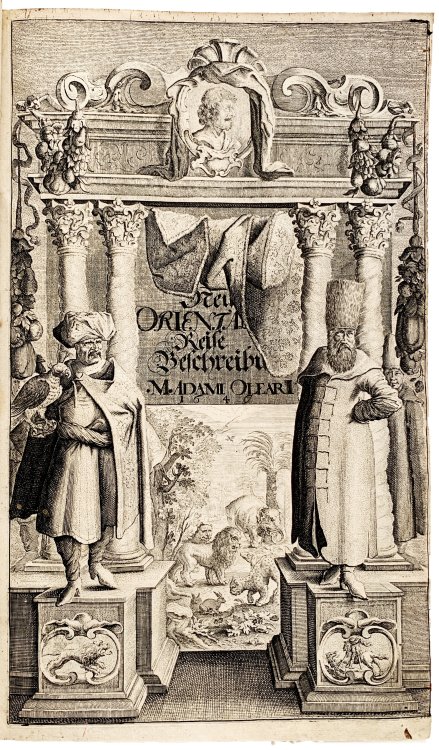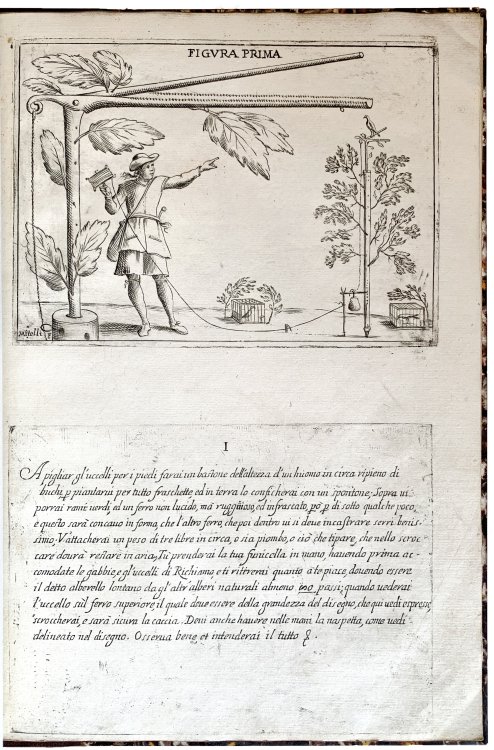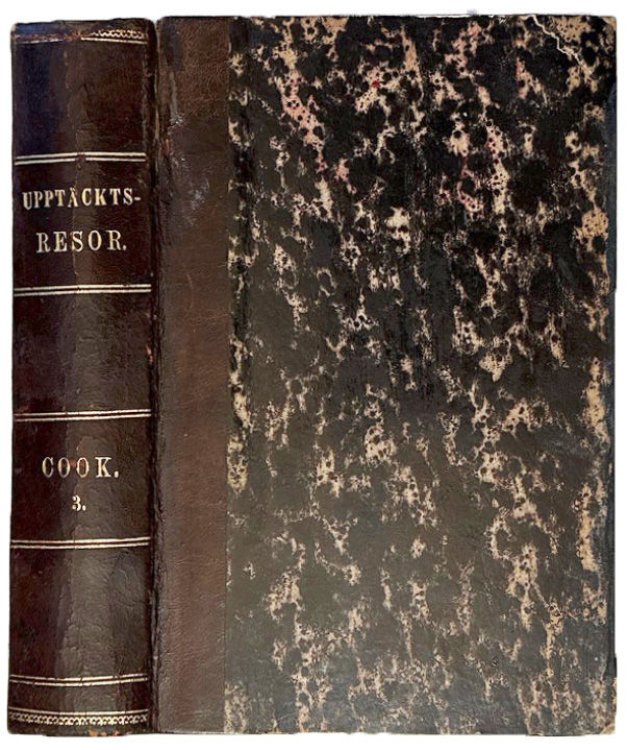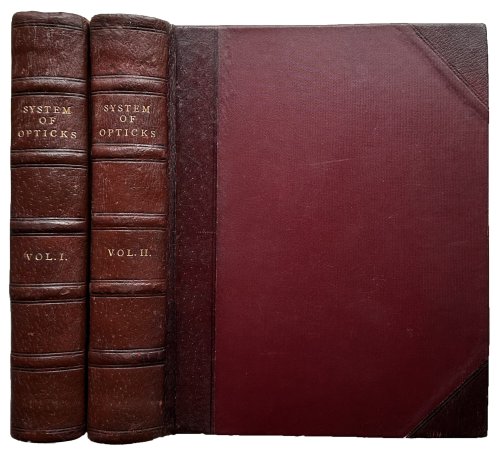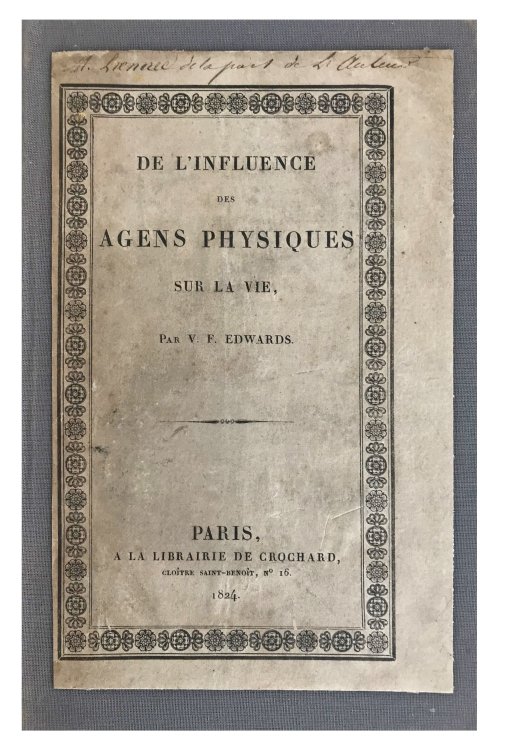
De L'influence des Agens Physiques Sur la Vie.
$650.00 USD • Used
Thick 8vo. xvi, 654, [2], [2] pp. Index, 1 plate, 1 fold-out plate. Modern cloth with original paper front and rear covers pasted to cloth; remnants of original spine pasted to cloth spine. Hologr...
Store: JeffWeberRareBooks [View Items]
Thick 8vo. xvi, 654, [2], [2] pp. Index, 1 plate, 1 fold-out plate. Modern cloth with original paper front and rear covers pasted to cloth; remnants of original spine pasted to cloth spine. Holographic inscription inked to top of original cover page, "M. Laennec de la part de l'auteur". One-page holographic letter, from addressed to "Mon Cousin." [Unknown are the persons involved with this letter, the writer, or recipient]. Rubber-stamp on title-page "Laboratoire de Physiologie Ecole de Medecine de Nantes". Foxing throughout, title and half-title pages with waterstain markings. Very good. PRESENTATION COPY FROM THE AUTHOR TO LAENNEC. First edition. WILLIAM FREDERIC EDWARDS, French physiologist, born in Jamaica, the brother of Henri Milne-Edwards, studied under Francois Magendie, who was also a pioneer anthropologist. He has been called "the father of ethnology in France". He was elected to the Royal Society in 1829. Edwards was a vitalist who studied the effect of physical forces on processes in living organisms, "seeking to demonstrate how physical forces such as heat, light, and electricity modified living processes." The present work was translated into English in 1834, by Thomas Hodgkin. See: Jeffrey P. Baker, The Machine in the Nursery: Incubator Technology and the Origins of Newborn Intensive Care. Johns Hopkins University Press, 1996. (p. 16). "After a short excursion into mineralogy, Edward devoted much time to the study of the influence of environmental factors on the 'animal economy.' His early results were honored by the Prix Montyon of the Academie des Sciences (1820), and in 1824 he published his finding in a book. His main idea as that vital processes depend on external physical and chemical forces but are not entirely controlled by them. Life is different from heat, light, or electricity, forces which, however, contribute to the production of vital phenomena. Edwards systematically examined all principal functions, mostly of vertebrate species; and by varying the external conditions, he determine the nature and degree of their modification. Among the phenomena studied were the minimum and maximum temperatures compatible with life; heat production in young and adult animals; resistance of young animals to cold and to lack of oxygen; the importance of humidity, pressure, and movement of air in the loss of heat by transpiration; the role of light in the development of batrachians; and expiration of carbon dioxide by animals deprived of oxygen. Important was his finding that some warm-blooded animals . . . are norm less developed and have a much smaller capacity for heat production than those not born helpless . . . " DSB. In 1822, Laennec became Chair of Medicine at the College de France, where Edwards carried out his research under the direction of his mentor, Francois Magendie (1783-1855). This may be the nexus explaining the lengthy presentation to Laennec. The work was quite popular when published. It was translated into English in 1824 by Thomas Hodgkin (1798-1866). "Edwards studied the influence of environmental factors on animal life, concluding that vital processes depend on external physical and chemical forces but are not entirely controlled by them. The work includes an account of Edwards' important experimental work regarding the effect of light on the body." Garrison & Morton 145.56, 1991, 598. DSB, IV, pp. 285-6 [by Vladislav Kruta]. First Edition.
Product Info
Publisher: Chez Crochard, 1824.
Year: 1824
Type: Used
Binding: Softcover
Seller Info
JeffWeberRareBooks
Address: Place Pury 9 Neuchâtel,
Website: https://www.weberrarebooks.com
Country: Switzerland



